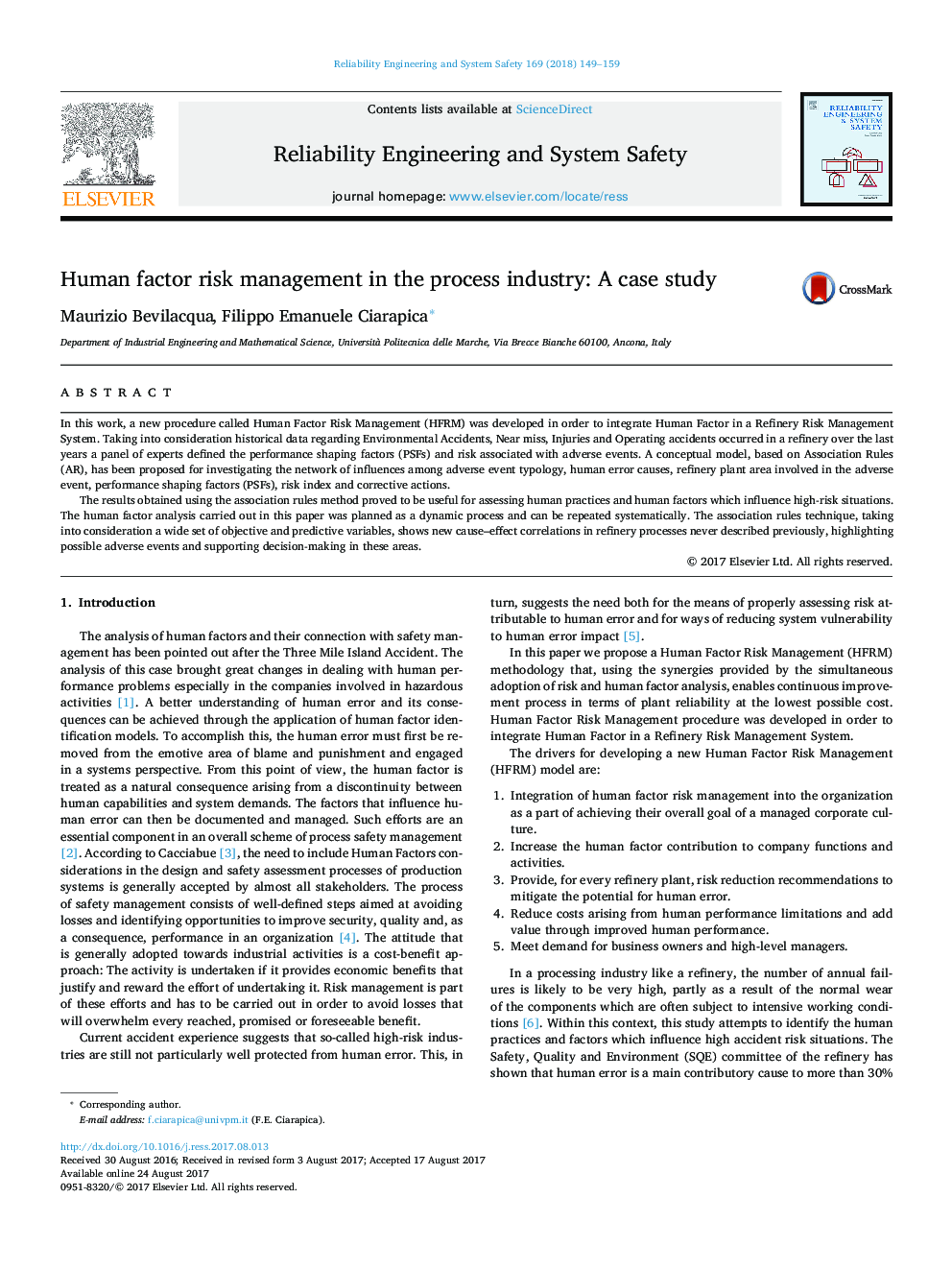| کد مقاله | کد نشریه | سال انتشار | مقاله انگلیسی | نسخه تمام متن |
|---|---|---|---|---|
| 5019266 | 1468201 | 2018 | 11 صفحه PDF | دانلود رایگان |
1 مقدمه
جدول 1 لیست علل انسانی
2 مرور مقالات
2.1معیار ناکامل برای انتخاب PSFs
3. روش تحقیق
3.1 روند مدیریت ریسک عامل انسانی (HFRM)
3.1.1 تحلیل رویداد
3.1.2 تشخیص علل انسانی
3.1.3 تشخیص PSFs
3.1.4 تحلیل ریسک
3.1.5 فعالیت های اصلاحی انسانی
3.1.6 تحلیل ریسک عامل انسانی
3.1.6.1 روش قانون انجمنی
4 کاربرد روش تحلیل ریسک عامل انسانی
4.1 بحث
5 نتیجه گیری
شکل 1. تحلیل فرآیند مضر و روندهای HFRM
جدول 2. PSFs
جدول 3. ماتریس ارزیابی ریسک
جدول 4. فعالیت های اصلاحی انسانی
جدول 5. مقیاس زمانی برای انجام سفارش کار و تحلیل فعالیت های اصلاحی
جدول 6. کدگذاری و توزیع تکرار عوامل و آیتمها
جدول 7. شاخص ریسک نتیجه = "بالا"، درجه بندی 5 قانون اول
جدول 8. PSFs منتجه = "سطح آموزش"، درجه بندی 5 قانون اول
جدول 9 برخی از عبارات نشان داده شده در شکل 1 را جمع آوری می کند.
جدول 10. لیست اولیه PSFs
- HFRM procedure allowed risk managers to examine a wide variety of adverse event quickly and systematically.
- HFRM procedure provides an integration of human factor risk management into SQE management system.
- HFRM procedure provides risk reduction recommendations to mitigate the potential for human error.
- The association rules technique shows new cause-effect correlations in refinery safety.
In this work, a new procedure called Human Factor Risk Management (HFRM) was developed in order to integrate Human Factor in a Refinery Risk Management System. Taking into consideration historical data regarding Environmental Accidents, Near miss, Injuries and Operating accidents occurred in a refinery over the last years a panel of experts defined the performance shaping factors (PSFs) and risk associated with adverse events. A conceptual model, based on Association Rules (AR), has been proposed for investigating the network of influences among adverse event typology, human error causes, refinery plant area involved in the adverse event, performance shaping factors (PSFs), risk index and corrective actions.The results obtained using the association rules method proved to be useful for assessing human practices and human factors which influence high-risk situations. The human factor analysis carried out in this paper was planned as a dynamic process and can be repeated systematically. The association rules technique, taking into consideration a wide set of objective and predictive variables, shows new cause-effect correlations in refinery processes never described previously, highlighting possible adverse events and supporting decision-making in these areas.
Journal: Reliability Engineering & System Safety - Volume 169, January 2018, Pages 149-159
